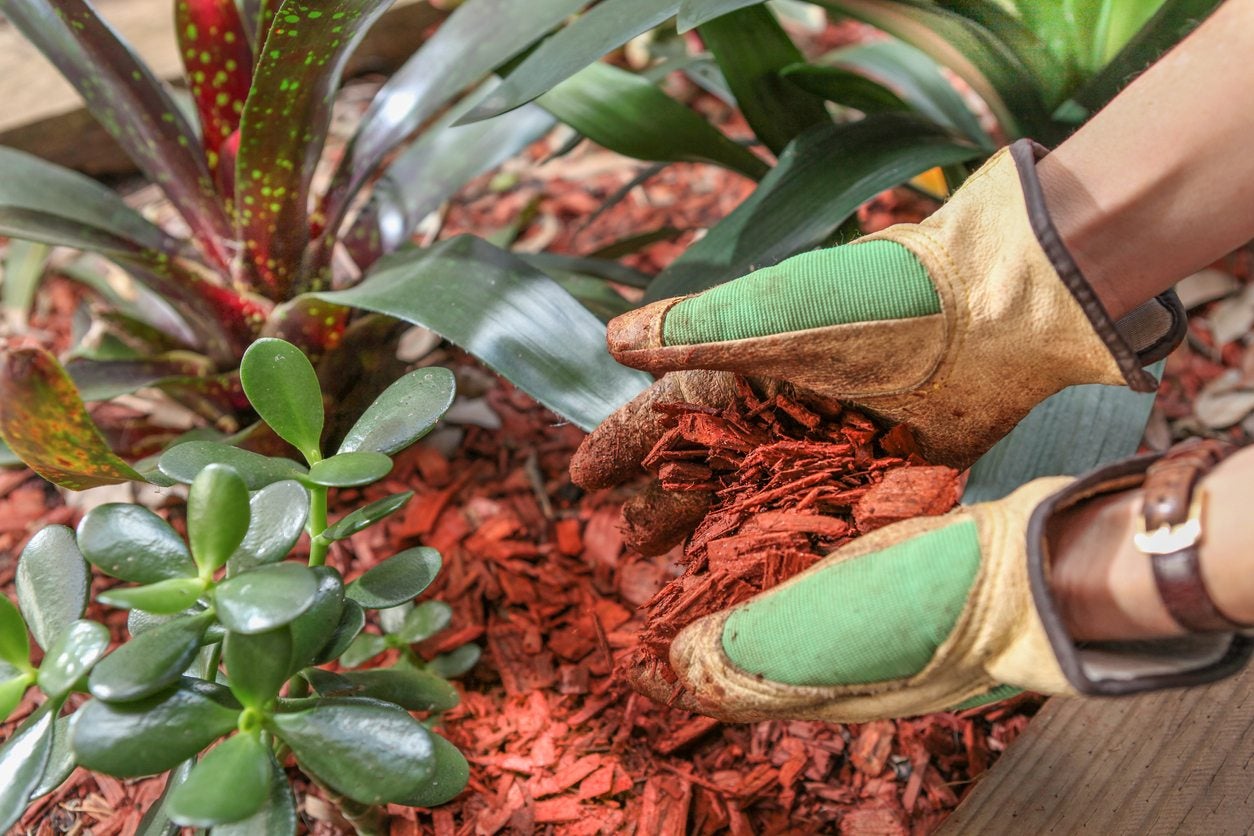What Is Wood Chip Mulch – Information About Wood Chip Garden Mulch


There are many ways to enhance the garden with wood chip mulch. It provides natural texture that sets off plants and reduces weeds along with a host of other benefits. What is wood chip mulch? Wood chip garden mulch may be simply the by-product of an arborist's labor, purchased in bags at nurseries or bought in bulk at garden centers. No matter how you acquire the stuff, it is an invaluable addition to the ornamental or produce garden.
What is Wood Chip Mulch?
Expert gardeners extol the virtues of mulching. There are many kinds of mulch, from organic to inorganic. Each has its special advantages and there is not one recommended over another in some cases. Using wood chips, however, has the added advantage of increasing nutrients in soil over time. This is because wood chip garden mulch is organic and will slowly break down, releasing nutrients to the soil. Mulch is simply any substance that can protect soil and plant roots as a groundcover. Mulching is also used in paths and between pavers to reduce weeds and provide a clean appearance. Mulching has many benefits, among them:
- leveling soil temperature
- reducing erosion
- enhancing soil fertility
- improving soil structure
- conserving moisture
- reducing pests and disease
With all these advantages, why wouldn't you use mulch? Using wood chips brings to the table all these benefits, but there are some wood chip mulch pros and cons. Many of these are fallacies, but a few need to be cleared up.
Wood Chip Pros and Cons
The benefits of using wood mulch are numerous and listed above. They also include the ease of application, aesthetic pleasure and cost effectiveness. On the cons list, there have been some discussion about the possibility of altered soil pH, allelopathic potentials, disease transfer, increased pest activity and, of course, fire hazard. Of these concerns, each has been found to be inconclusive in field trials. In fact, soil pH is generally stabilized, allelopathic tendencies in certain barks do not affect established plants, and disease and pests are often minimized. As to the fire issue, inorganic rubber mulch is far more flammable and large sized wood mulch is the least flammable. There are many types of wood chips that come from different trees, all with their own good points and possibly not so good aspects. Cedar mulch has the added benefit of repelling some insect pests, but black walnut mulch has strong allelopathic chemicals that can limit germination and seedling growth. In general, it is best to use wood chips around established plants only and avoid the vegetable bed except to create paths. Keep chips away from stems and trunks and the siding on the house. Use 4 to 6 inches (10-15 cm.) of wood mulch over a nicely broken-down organic layer such as leaf litter or compost. There are also several wood chip mulch colors from which to choose if you purchase the product. Deeply red, orange, ocher, coffee black, rich mahogany brown and more can offset your landscape. Using colored mulch, like red wood chips, poses no threat to plants but will, overtime, fade in color as they break down. Don't be a snob and turn your nose up at the mixed natural hues of free, yes free, arborist chips though. In most municipalities, you can phone your park department and they will drop them to your site.
Gardening tips, videos, info and more delivered right to your inbox!
Sign up for the Gardening Know How newsletter today and receive a free copy of our e-book "How to Grow Delicious Tomatoes".

Bonnie Grant is a professional landscaper with a Certification in Urban Gardening. She has been gardening and writing for 15 years. A former professional chef, she has a passion for edible landscaping.